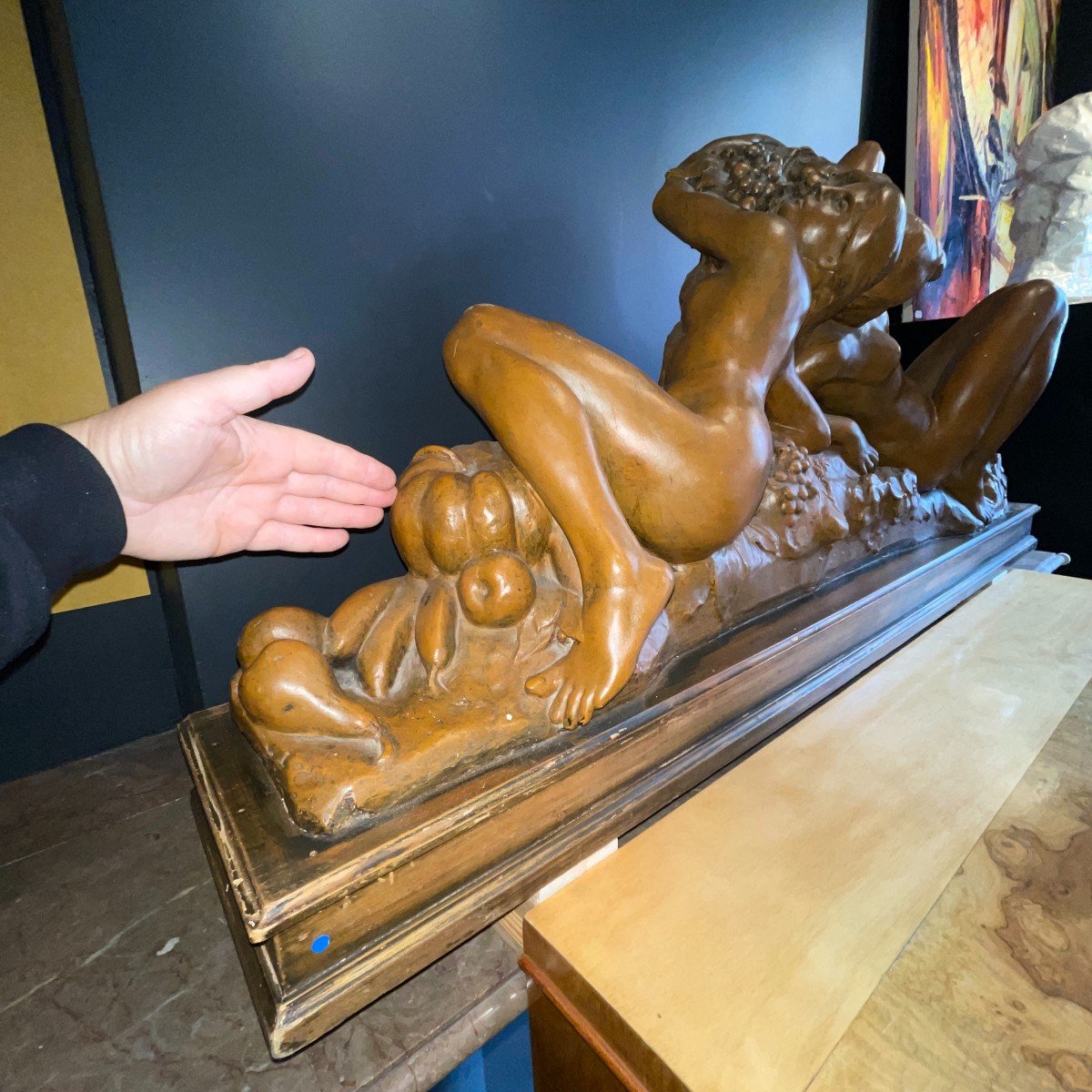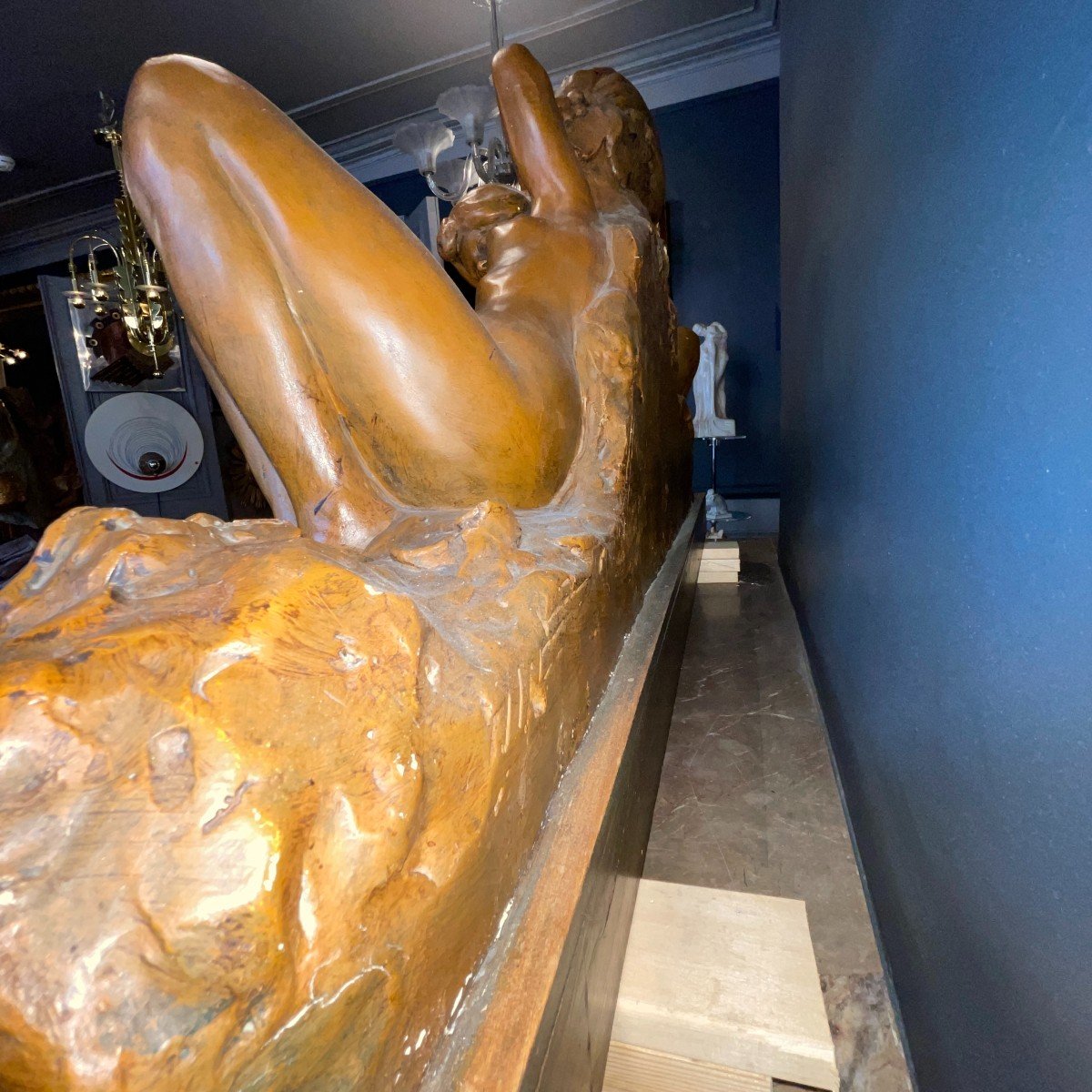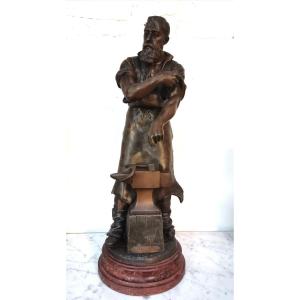The scene depicts bacchantes, naked women with fruit, lying down and embracing, in the Art Nouveau spirit of the period.
This is undoubtedly a project (studio plaster), a unique piece, as we found nothing in our extensive documentation during our research.
We most probably attribute it to the Belgian sculptor Jef Lambeau (see perhaps Isidor de Rudder), in the taste and spirit of Auguste Rodin and Camille Claudel.
The work is in good condition, with a few small dents visible in the photos, deliberately left ‘as is’.
His most famous work was Le Faune mordu, shown at the Brussels (1897) and Paris (1900) World Fairs, but which became the focus of a controversy over nudes at the 1905 World Fair in Liège, where it was covered by a veil.
Another major work was Les Passions humaines (1886), a marble bas-relief that was incorporated into Victor Horta's pavilion in the Parc du Cinquantenaire, for which he was awarded a medal of honour at the 1900 Universal Exhibition in Paris. He was made a member of the Académie royale de Belgique in 1903. Since 1899, the relief of Les Passions humaines has been the subject of both praise and criticism.
Main works
1881: The Kiss, in the Royal Museum of Fine Arts, Antwerp; Silvius Brabo, Antwerp;1890 or thereabouts: The Eagle Scout, in the Royal Museum of Ancient Art, Brussels; 1899: the Pavilion of Human Passions, one of Victor Horta's first buildings, specially constructed in 1899 in a classical style to house Jef Lambeaux's monumental bronze high relief ‘Les Passions humaines’, which evokes the pleasures and misfortunes of humanity. Three days after its opening, the work, which was daring for its time and depicted bodies embracing, caused a veritable moral scandal. The open pavilion behind the façade columns was walled up and closed with a metal door. Now reopened, it forms part of the Royal Museums of Art and History.















































 Le Magazine de PROANTIC
Le Magazine de PROANTIC TRÉSORS Magazine
TRÉSORS Magazine Rivista Artiquariato
Rivista Artiquariato